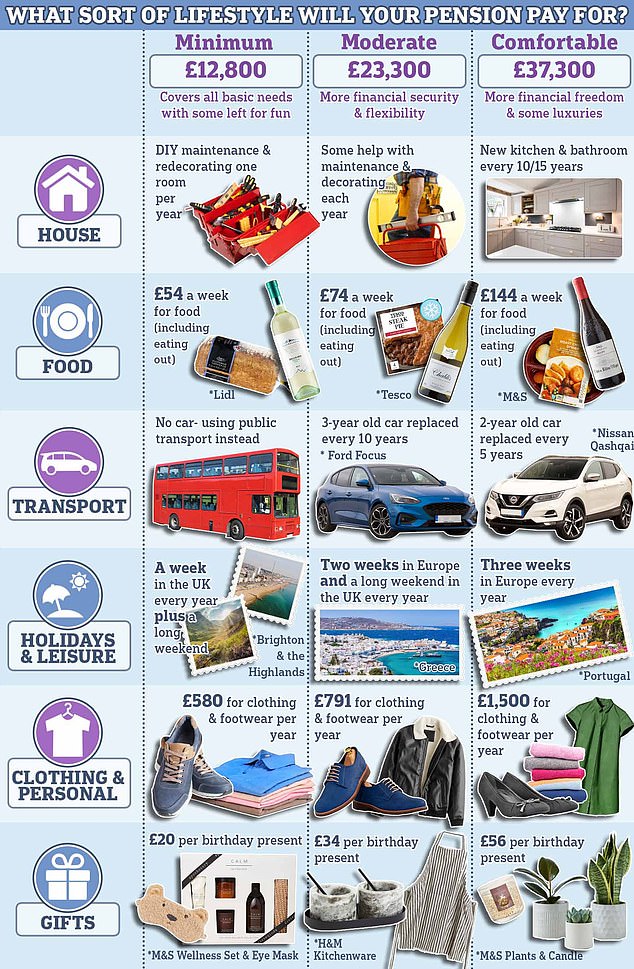Small Business Owners Are Cash Rich But Neglecting Their Pensions: Here’s What You Need To Do
New research shows that small business owners are putting money into savings at the expense of their pension pot.
Many employees now build up a pension pot as standard through automatic registration.
But if you’re self-employed, it’s up to you to set one up and contribute to it – and a survey by Workwell and the Association of Independent Professionals and the Self-Employed (IPSE) shows many aren’t.
Only 51 percent put money into their pension every month, while three in four regularly save in cash accounts, the research shows.
Self-employed people put more money into their savings every month than into their pension pots
A 2023 survey by Interactive Investor shows that this figure could be even higher, finding that as many as three in four self-employed people are not paying into a pension.
Although they may not have large pension pots, according to the Workwell survey, almost half of self-employed people surveyed were debt-free and had already paid off mortgages, credit cards or loans. About a third owed less than £100,000 in total.
Among those who do invest in pensions, the average monthly contribution is around £218, compared to £215 per month going into cash accounts, £237 into Isas and £184 into other investment products.
While it may not be as simple as auto-enrolment, there are good reasons to invest in a pension as a self-employed person, and it’s never too late to start.
Becky O’Connor, public affairs director at pension platform PensionBee, says: ‘I think most self-employed people are well aware that pension provision is a bit of a black spot on the horizon for them, but few feel they have much to worry about. can do. It.
‘Being self-employed can be very exciting, so finding the time or inclination to think long-term, beyond what’s going to happen in the coming months, can be a challenge.’
If you are starting to save for pensions as a self-employed person, we will explain to you why it is important to start saving for pensions and how to do so.
Why save for a pension?
Pensions are the best way to put money aside for your retirement. Even small monthly contributions can make a significant difference in your lifestyle in old age.
In addition to the satisfaction of seeing your pot build, you also receive tax relief on your pension contributions.
For most people it is quite easy to claim the tax credit on their pension. If you are a basic rate taxpayer, you will pay 20 per cent income tax on anything you earn above the personal allowance (£12,570).

However, if you put money into your pension, you will get back the tax you have already paid.
For most people, this amounts to 25 percent on top of whatever you pay. So if you contribute €100 per month, you will automatically receive an additional €25 through tax relief.
If you are a basic rate taxpayer paying 20 per cent income tax, £125 becomes £100 before tax. When you put this money into your pension, you get back the income tax you originally paid, so your £100 contribution becomes £125 is becoming.
If you’re a higher rate taxpayer, you’ll get even more tax relief, but you’ll need to claim it on your tax return.
You can benefit from pension tax relief until you are 75. Even if you are approaching retirement age, you can still make a difference by opening a pension now.
Gary Smith, financial planning partner at asset manager Evelyn Partners, said: ‘If business owners are not making pension contributions I would certainly encourage them to do so as they may miss out on tax relief on personal contributions. Tax on all contributions made through the company.
‘In addition, for those who own a limited company, paying employer contributions is often a very useful method of boosting retirement savings, especially if they only receive a nominal salary from the company (say £12,000), which would limit how much they can personally can contribute. .’

Advantages: Saving for a pension as a self-employed person has various tax advantages
O’Connor adds: ‘I wonder if there is a misunderstanding that without employer contributions there is no point in worrying about a pension and that you might as well opt for savings.
‘This may stem from the fact that you don’t really understand the benefits of tax relief, and that even as a self-employed person you still get tax relief – and it is very valuable. It is definitely more of an increase than the interest on savings accounts.
‘Thousands of PensionBee customers are self-employed, many with their own companies. Those who pay themselves on the payroll often also arrange pensions for employees through their own companies.’
Are self-employed people eligible for the state pension?
If you are self-employed, you are eligible for the AOW pension if you have paid national insurance contributions for at least 10 years. To receive the full amount, you must have paid premiums for at least 35 years.
If you are ineligible due to insufficient contributions, you can make voluntary payments to make up for lost years.
The state pension is an important part of any pension scheme and the good news is that the amount has increased significantly due to the ‘triple lock’ – the policy of increasing the benefit in line with the highest wages, inflation or 2.5 percent.
Wage figures were at their highest last year, meaning the state pension will rise by 8.5 percent in April.
Currently the maximum state pension is £203.85 per week (tax year 2023/24), which equates to £10,600.20 per year, but this may not cover all your living costs.
The Pensions and Lifetime Savings Association has estimates of what kind of lifestyle a single person or couple can expect in retirement, based on how much they can save.

How much do you need to save? This shows what the different annual pension amounts will yield at retirement, based on one person (Source: PLSA)
However, these figures don’t include housing costs, so you should think about putting a little more money aside if you’re renting or paying off another mortgage.
The PLSA estimates that a couple needs £23,300 a year to live a moderate lifestyle and £37,300 a year for a comfortable lifestyle.
This means that if you are self-employed and have become accustomed to a certain lifestyle, you may want to consider opening a private pension to supplement the state pension.
> How to build a pension from scratch and why it is never too late to save
How self-employed people can build up a pension
It’s never too late to start saving for your retirement and luckily there are many cheap pensions available.
To ensure you find a pension that suits you, you need to do your own research.
Some of the most important questions to ask yourself are:
- How much money do you have in pension?
- What type of investments do you want to hold?
- Do you want to manage these investments yourself or have someone else manage them?
- Do you have existing pensions that you want to consolidate?
- Do you contribute monthly or in one go?
If you’re already investing in an Isa, you can probably open a self-invested personal pension (Sipp) through your platform, giving you control over the investments that make up your pension pot.
Some links in this article may be affiliate links. If you click on it, we may earn a small commission. That helps us fund This Is Money and keep it free to use. We do not write articles to promote products. We do not allow a commercial relationship to compromise our editorial independence.
